Ulysses HISCALE Publications and Presentations
Particle Anisotropy During the Onset of a Solar Event
Authors: G. M. Simnett and S. J. Tappin, University of Birmingham, U.K.; L. J. Lanzerotti, AT&T Bell Laboratories, Murray Hill, NJ; R. E. Gold and E. C. Roelof, Johns Hopkins University Applied Physics Laboratory, Laurel, MD; K. A. Anderson, Space Sciences Laboratory, University of California-Berkeley; T. P. Armstrong, University of Kansas, Lawrence, KS; R. P. Lin, Space Sciences Laboratory, University of California-Berkeley; S. M. Krimigis, Johns Hopkins University Applied Physics Laboratory, Laurel, MD; M. Pick, Observatoire de Paris, Meudon, France; E. T. Sarris, University of Thrace, Xanthi, Greece.
Presented at: European Geophysical Society Meeting, Edinburgh, Scotland, April 1992.
Solar Activity around December 1, 1990
Notes:
Main active
regions around E50 solar longitude.
Region 6387 (S25) and Region 6390 (N33).
No identified optical flare with GOES x-ray flux above
C5 since 10:00 UT, November 20.
There was an unidentified M1.2 x-ray flare around 01.05
UT on December 1.
The December 1 particle event at Ulysses was the largest
event seen in 1990.
Figures:
(Some of the figures were originally in color; these black and white copies are somewhat degraded in quality.)
 |
Figure 1. |
 |
Figure 2. |
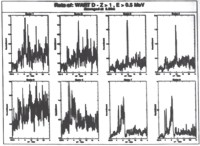 |
Figure 3. |
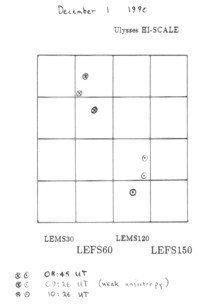 |
Figure 4. |
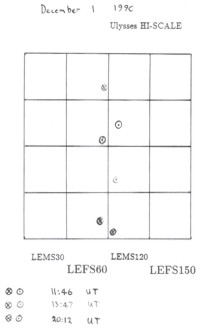 |
Figure 5. |
 |
Figure 6. |
|
(figure not available) |
Figure 7. Anisotropy of P7 - 1060-5000 keV ions |
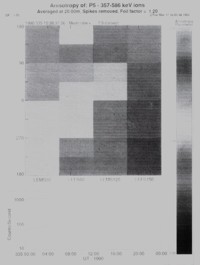 |
Figure 8. |
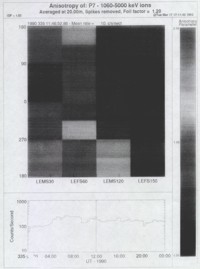 |
Figure 9. |
 |
Figure 10. |
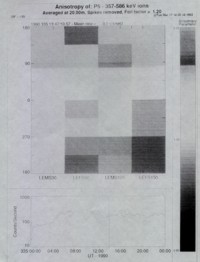 |
Figure 11. |
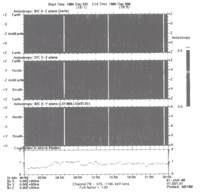 |
Figure 12. |
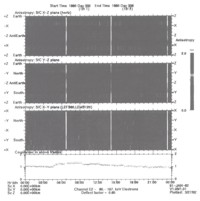 |
Figure 13. |
Conclusions:
- The interplanetary medium is populated with ions less than a few MeV which are largely streaming away from the Sun.
- The event is seen earlier at IMP8 than at Ulysses.
- There is evidence that some of the collimated ion fluxes are back-scattered beyond the spacecraft and are reflected back.
- The ions are generally field-aligned.
- The event is consistent with the spacecraft moving through different flux-tubes populated with energetic solar particles which are for the most part streaming outwards.
- This event, while being relatively weak in electrons, nevertheless was accompanied by significant fluxes up to 300 keV.
- There appeared to be no change in the proton/alpha particle ratio when the spacecraft entered a new flux-tube.
Updated 8/8/19, Cameron Crane
QUICK FACTS
Mission End Date: June 30, 2009
Destination: The inner heliosphere of the sun away from the ecliptic plane
Orbit: Elliptical orbit transversing the polar regions of the sun outside of the ecliptic plane



